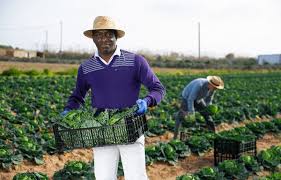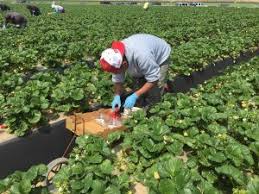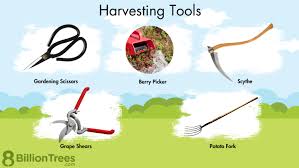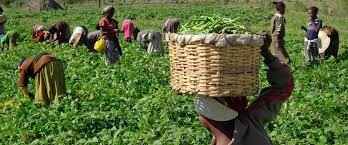Harvesting is a crucial stage in agriculture, marking the time when crops are collected for consumption or sale. The methods and techniques used in harvesting can significantly impact the quality of the produce and the efficiency of the process. Understanding the various factors that influence harvesting methods and the techniques suitable for different crops can help ensure a successful harvest.
Factors Influencing Harvesting Methods
Several factors play a role in determining the most appropriate harvesting methods for a particular crop. These include:
1. Crop Type: Different crops require specific harvesting techniques based on their growth patterns and physical characteristics. For example, grains are typically harvested using combine harvesters, while fruits may be hand-picked.
2. Weather Conditions: Weather can affect the timing and method of harvesting. For instance, wet or rainy conditions can make harvesting difficult, while dry weather may make it easier to harvest grains.
3. Maturity Stage: Crops must be harvested at the right maturity stage for optimal quality and yield. Early or late harvesting can lead to poor quality or reduced yield.
4. Labor Availability: The availability of labor can influence whether mechanized or manual harvesting methods are used. In areas with limited labor, mechanization may be necessary.
5. Economic Considerations: The cost of harvesting equipment and labor can impact the choice of harvesting methods. Farmers often weigh the benefits against the costs to determine the most viable option.
Overview of Common Harvesting Methods

Harvesting methods can be broadly classified into two categories: manual and mechanical.
1. Manual Harvesting: This method involves using hand tools or simply picking crops by hand. It is labor-intensive and is often used for delicate crops like fruits and vegetables.
2. Mechanical Harvesting: This involves the use of machinery to collect crops. It is more efficient and is commonly used for large-scale farming operations, especially for grains.
Harvesting Techniques for Grains
Grain harvesting typically involves the following techniques:
1. Combine Harvesting: This method uses a combine harvester that cuts, threshes, and cleans the grain in one operation. It’s efficient for large fields and can handle various grain types.
2. Manual Reaping: In smaller farms or for specialty grains, manual reaping with sickles or scythes may be employed. This method is labor-intensive but allows for careful handling.
3. Swathing: This technique involves cutting the grain and laying it in rows to dry before collection. This is often used for crops like canola and barley.
Harvesting Techniques for Fruits
Fruits require careful handling to maintain their quality. Common harvesting techniques include:
1. Hand Picking: Many fruits, such as apples, peaches, and berries, are harvested by hand to avoid bruising. This method ensures that only ripe fruits are selected.
2. Mechanical Harvesting: For larger orchards, mechanical harvesters can shake trees to release ripe fruit. This method is faster but can lead to more damaged fruit.
3. Ladder and Picking Tools: For high-growing fruits, ladders and picking poles may be used. These tools help reach fruits without damaging the tree.
Read Also: Gray Leaf Spot (Stemphylium spp) – Symptoms and Damage Control
Harvesting Techniques for Vegetables

Vegetables are often harvested using specific techniques tailored to their types:
1. Hand Harvesting: Many vegetables, like tomatoes and peppers, are hand-harvested to ensure quality and minimize damage. This allows for careful selection of ripe produce.
2. Knives or Hand Tools: For crops like lettuce or carrots, knives or specialized hand tools are used to cut the vegetables at the base for easy harvesting.
3. Mechanical Harvesters: For large-scale production of crops like potatoes or onions, mechanical harvesters can dig and collect vegetables efficiently. These machines reduce labor costs and increase harvest speed.
Harvesting Techniques for Tubers and Roots
Tubers and roots, such as potatoes, carrots, and sweet potatoes, require careful harvesting to avoid damage. Here are the common techniques used:
1. Hand Harvesting: Many small-scale farmers prefer to harvest tubers and roots by hand, especially in home gardens. This method involves using tools like shovels or trowels to gently dig around the plant, ensuring that the roots are not broken.
2. Mechanical Harvesting: For larger operations, mechanical harvesters designed for tubers are used. These machines lift the tubers from the soil and separate them from dirt, making the process quicker and more efficient.
3. Pulling and Twisting: For crops like carrots or beets, pulling them straight from the ground can be effective. Twisting the vegetable as you pull can help loosen the roots and minimize breakage.
Harvesting Techniques for Nuts
Harvesting nuts, such as almonds, walnuts, and pecans, involves specific methods to ensure that the nuts are collected efficiently without damage.
1. Hand Harvesting: In small orchards, nuts may be harvested by hand. Workers shake the tree or use poles to dislodge the nuts, which are then collected from the ground.
2. Mechanical Harvesting: Larger operations often use mechanical nut harvesters, which can shake the trees and collect the nuts as they fall. These machines minimize labor costs and increase efficiency.
3. Raking: After shaking the trees, workers may use rakes or other tools to gather the fallen nuts into piles for easier collection.
Specialized Harvesting Methods
Certain crops require specialized techniques to ensure proper harvesting. Some of these methods include:
1. Vine Crops: For crops like cucumbers and squash, using scissors or clippers is recommended to cut the fruit from the vine. This prevents damage to the plant and helps maintain quality.
2. Grapes: Grapes are often harvested by hand, where workers selectively pick bunches to ensure they are at the right ripeness. Mechanical grape harvesters are also available, which can shake the fruit from the vine.
3. Seed Crops: For crops grown for seed, like sunflowers, harvesting may involve cutting the heads and allowing them to dry before threshing. Specialized seed harvesters can streamline this process.
Read Also: Recommended Number of Ruminant Animals per Housing Unit for Fattening
Equipment and Tools for Harvesting

Having the right equipment and tools is crucial for effective harvesting. Common tools and equipment include:
1. Hand Tools: Shovels, hoes, knives, and clippers are essential for manual harvesting of various crops.
2. Mechanical Harvesters: Depending on the crop type, farmers may use combine harvesters for grains, specialized tuber harvesters, or nut harvesters.
3. Baskets and Containers: Using appropriate baskets or containers for collecting harvested produce helps prevent damage and makes transportation easier.
4. Rakes and Shakers: For nuts and certain fruits, rakes and mechanical shakers help gather fallen produce efficiently.
Safety Considerations During Harvesting
Harvesting can be physically demanding, and safety is paramount. Here are some important safety considerations:
1. Proper Training: Ensure that all workers are trained in the safe use of equipment and tools to minimize accidents.
2. Personal Protective Equipment (PPE): Workers should wear appropriate PPE, such as gloves, hats, and sturdy footwear, to protect against injuries.
3. Hydration: Provide access to water to keep workers hydrated, especially in hot weather.
4. Lifting Techniques: Teach proper lifting techniques to prevent back injuries when handling heavy loads of produce.
5. Weather Awareness: Monitor weather conditions, as rain or high winds can create hazardous working environments.
Understanding the right harvesting techniques for different types of crops, along with the factors influencing these methods, can lead to improved efficiency and better crop quality. By applying the appropriate methods, farmers can maximize their harvest potential and ensure their produce reaches the market in optimal condition.
Do you have any questions, suggestions, or contributions? If so, please feel free to use the comment box below to share your thoughts. We also encourage you to kindly share this information with others who might benefit from it. Since we can’t reach everyone at once, we truly appreciate your help in spreading the word. Thank you so much for your support and for sharing!
Read Also: 4 Steps to help an Orange Tree Produce Sweet Oranges
Frequently Asked Questions
We will update this section soon.

